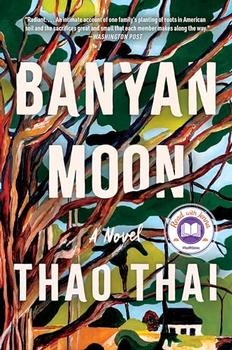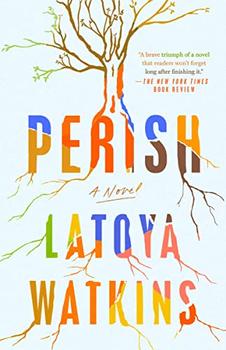Summary | Excerpt | Reading Guide | Reviews | Beyond the book | Read-Alikes | Genres & Themes | Author Bio

"They say money doesn't grow on trees, but it does when one's talking about bananas." In a Costa Rican town called Barrio Ávila in 1968, a fire decimates the banana plantation run by the American Fruit Company. The same night the blaze is set, José María Sánchez murders his mother-in-law, Amarga Cepeda Valverde, and disappears, never to be seen again by his wife Teresa or their twin daughters, Lyra and Carmen. Almost thirty years later, Teresa and Lyra are estranged, Carmen is dead, and no one is any closer to understanding what made José María commit this unspeakable crime.
We learn in the first chapter of Where There Was Fire that Teresa's grandmother, believed to be a witch, passed down to her a particular piece of wisdom: "Men are the devils, and women the saints. And every woman is born with a sharp machete inside her heart. She must learn to wield it, to cut off men's tails." This assessment aligns with Teresa's experience; after all, her husband seemingly went mad one night and murdered her mother. But we come to learn that the situation is much more complicated. José María's act was not evidence of an evil within, it was the work of the evil specter of American imperialism that haunted the town.
The large-scale sociopolitical effects of American interference in Central and South America — dictatorships, war, economic instability — are widely discussed. Less so are the personal effects on individual families. In his debut novel, John Manuel Arias zooms in for a closer look at that particular brand of devastation. Through happenstance, a box of documents containing correspondence of American Fruit's management and affiliates comes into Lyra's possession, and she learns what role the company played in her father's crimes. These letters punctuate the middle of the novel, gradually revealing what happened in the days, months, and years leading up to that fateful night in 1968. This plot device is wielded well, because the letters are as wrenching as they are expository. The theme of imperialism is as entrenched in the book as it was and remains in the affected regions, an unbreakable shackle connecting one generation to the next. We learn, for instance, that Amarga is the daughter of a white coffee baron and "an Indigenous woman whom he cornered one night in the washroom," and Teresa's father was a lawyer for American Fruit who disappeared under mysterious circumstances.
Where There Was Fire is redolent with the gothic and supernatural, and may draw comparisons to Gabriel García Márquez. Aria's prose is florid:
"La Guaria Railroad sprawled out like a fat, tired snake, dividing Teresa's lonely house from the rest. The newly installed streetlamps stood sentinel, their heads swarmed by lazy gnats and tiny things that touched the lights and fell to the track below. Trees gossiped in the hush. Two hounds lapped up each other's urine. A cane toad's croaking haunted streets and shadowed corners."
However, it's effectively restrained, with such descriptions appearing just frequently enough to remain enchanting rather than tiresome.
Though a man lights the match that ignites the plot, the book succeeds on the strength, folly, desperation, and hope of the Cepeda Valverde women. Teresa's longing for a reconciliation with Lyra, a relationship with her grandson, and some way of making sense of her mother's murder are rendered with delicate and anguished precision. Lyra is perhaps the most stable member of the family, but her anger toward Teresa for her neglectful behavior after the events of 1968 and her grief for Carmen burn incandescent. There is only one chapter from Carmen's perspective, which may feel like a missed opportunity for some readers given that her gift of telepathy makes her a naturally compelling character. However, it makes sense in the world of the novel, where Carmen's absence, like her father's, is a central void around which the other characters attempt to orient themselves.
In the 1995 timeline, Barrio Ávila is a hollowed out shell of its former self, the abandoned train on the defunct railroad tracks a symbol of emptiness left behind after the destruction of the corporate leviathan that birthed it. Amarga's room in the guesthouse behind Teresa's is exactly as she left it on the night she was murdered, a hushed tomb. Time stopped in 1968, not just for this family, but for the entire town. Where There Was Fire picks through the pieces of this disaster for salvage, and there is so much. We see the black void at the center of American capitalism and empire and the cold pile of ash it leaves behind, but also the depth of humanity at the center of Teresa and Lyra (and others). And Lyra's resolute effort to raise justice like a phoenix from these ashes is a triumph.
![]() This review was originally published in The BookBrowse Review in October 2023, and has been updated for the
September 2024 edition.
Click here to go to this issue.
This review was originally published in The BookBrowse Review in October 2023, and has been updated for the
September 2024 edition.
Click here to go to this issue.

If you liked Where There Was Fire, try these:

by Thao Thai
Published 2024
A sweeping, evocative debut novel following three generations of Vietnamese American women reeling from the death of their matriarch, revealing the family's inherited burdens, buried secrets, and unlikely love stories.

by LaToya Watkins
Published 2023
From a stunning new voice, comes a powerful debut novel, Perish, about a Black Texan family, exploring the effects of inherited trauma and intergenerational violence as the family comes together to say goodbye to their matriarch on her deathbed.
Finishing second in the Olympics gets you silver. Finishing second in politics gets you oblivion.
Click Here to find out who said this, as well as discovering other famous literary quotes!
Your guide toexceptional books
BookBrowse seeks out and recommends the best in contemporary fiction and nonfiction—books that not only engage and entertain but also deepen our understanding of ourselves and the world around us.